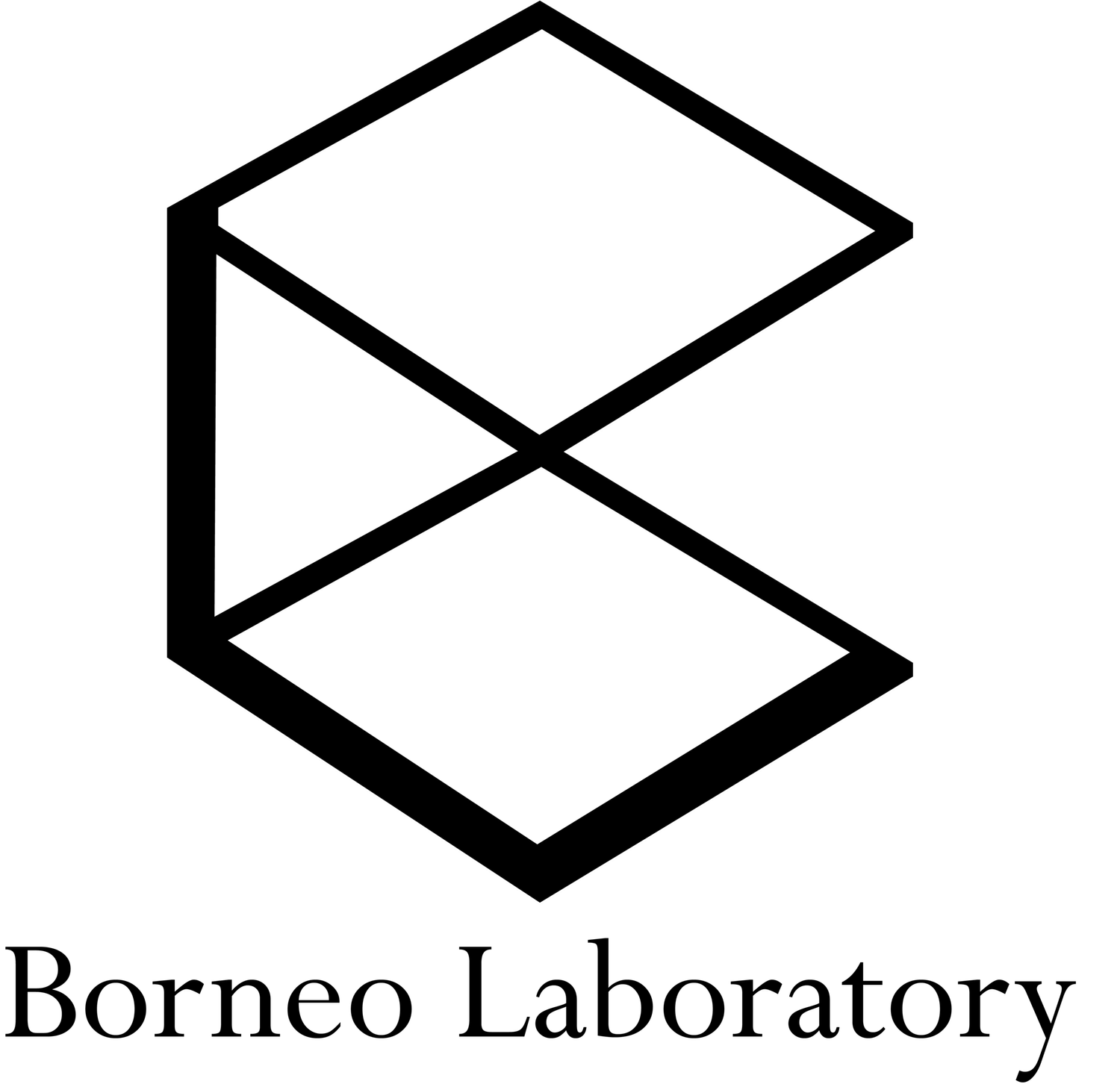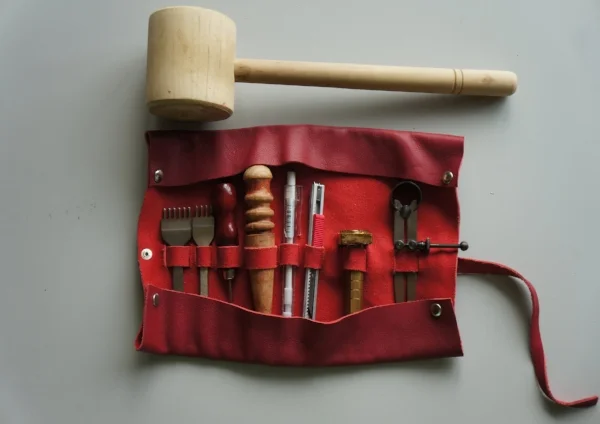Sang Tukang
Q&A with Adam Kitingan, founder of Sang Tukang
Facebook: Sang Tukang
Publication: Tiluwan journals
Catalogue: AK Catalogue
"In trying so hard to find an identity , I found that there's so many things that we share in common with the other indigenous communities of the world. Over time we must have begun to develop our own unique identity as we spread across the globe but there still remains the remnants our ancient heritage. Perhaps one day, these pieces would come together and reveal a great migration story, the truth to our origins. Essentially, the things that I create is a celebration of this."
B: Borneo Art Collective
ST: Sang Tukang
B: Describe your making approach. Tell us the story of your investigation.
ST: I bring a pencil,notebook and camera everywhere and try to document any traditional crafts that I can find. If I'm lucky, I get to meet the crafters and I always try and make a point to learn their processes. I found that while a lot of the designs have been handed down, each artist adds their own touch to it. It is hard to figure out the origin or meanings behind some of the patterns because it can be different from village to village. I record them anyway. From there i separate whats usable and whats not usable - whats taboo,what belongs to an artist and designs with insufficient data I dont use in my work.
B: Why and how did you start this making pursuit?
ST: It was only when I was abroad that I realised how small our community is. I couldn't identify with the people around me. I wanted to be identified as a Bornean and the most iconic symbol for that was the Bunga Terung. But it still didn't say much about where exactly on the island where I was from so I started then to look into tattoos from North Borneo. I've found that we did have a tattoo culture but unfortunately the designs were not properly documented. So I began to look into our design aesthetics through our attire, architecture, weave work, beads, artifacts, and anything I could get my hands on to. I built up a collection but it wasn't enough for me because I didn't understand the meaning behind the designs. So I started to research more about our beliefs, world views and the shared history between neighbouring countries. I met with elders and they explained the meanings of the motifs to me; they were stories and so I started to document.
I found that the designs are influenced by a few things : the resources available, methods on how to use those resources, the surrounding environment,daily life, beliefs, and interaction with foreign traders that made up this unique style.
But I still felt that it wasn't enough. It wasn't enough to just collect. Collecting is what people at the museums do when things are about to die or go extinct. These patterns and stories that I've collected belonged to another generation. I began thinking of ways to move forward and then it hit me - in order for a revival to take place, we must cultivate and expand that visual vocabulary and begin to tell our own stories. So once I knew what a motif meant, I started breaking them down into its basic parts. From there I managed to form a template and structure from which I could express my own stories and mark my peoples generation in time.
It is important to me because our indigenous history, languages and culture are not being taught at schools here. I myself can't speak my mother tongue and feel that this is a way I can make up for it and give back to my people as I'm more fluent with visuals. It's also a great place for me to start learning the language. This is a way of saying we exist, we are here, we are our own people.
With the designs that I had, I also realised that not everybody could get a tattoo. So I decided to work with brass bracelets/"gohong" which is more accessible.
Then one thing led to another - I met this collective of nomadic makers from home and ended up quitting my day job to pursue something more meaningful and fulfilling to me.
B: Who/what influenced you to begin this making approach?
ST: I've always loved jewelry. The first piece I made was influenced by a traditional brass cuff that my mom gave me that was given to her by her mom. They shared with me what brass were use for, where it came from etc. I find the origin stories more interesting than the thing itself sometimes. People who buy my crafts also share their own stories. One time this lady brought a beautiful brass cuff that had been passed down for 9 generations.
Adam's father
B: Tell us about the selected crafts you are sharing with our audience? What is the big message you are trying to deliver through these three crafts?
ST: Sundatang - North Bornean stringed instrument
Sundatang
Gohong - Brass Cuff/ Bracelet
Gohong
Tattoos - North BorneoTattoo Revival
North Borneo tattoo revival
These each have a long design heritage. The pattern on the brass cuff for example is inspired by Rungus textile design. However, I have recently found a very simliar design on a pair trousers that was discovered in China which carbon dated at 3000 years old. This design is also found on Toraja houses.
In trying so hard to find an identity , I found that there's so many things that we share in common with the other indigenous communities of the world. Over time we must have begun to develop our own unique identity as we spread across the globe but there still remains the remnants our ancient heritage. Perhaps one day, these pieces would come together and reveal a great migration story, the truth to our origins. Essentially, the things that I create is a celebration of this.
B: Where do you see your making approach evolving in the near future? What are you trying to achieve at this point?
ST: I want to collaborate with artisans from all over Borneo . We need to realise that we are the same people, with a common history, on the same island. Through art and music I believe we can bridge that gap, and tear down the political borders that separate our people.
B: How do you see Borneo maker movement at the moment?
ST: Thank god for the internet. We are slowly recognising each other!
B: Tell us about the maker resource that is available in your area? What kind of facility you used for your projects?
ST: My resource can be as basic as a hammer , a nail grinded down to form a chisel and any found metals or wood. When I first started, I used to get blank brass bracelets from Dusun ladies at the market until I realised that they were made from a factory in China. I guess there's nothing wrong with that since we've been trading with them from hundreds of years now. But I personally feel that that method isn't as authentic so now I source raw brass from a local hardware and create the shapes from scratch. I basically work in my garage.
B: How could people access your crafts at the moment? Is there any public participation/volunteer you allow in your project/group?
ST: I sometimes travel with a group of crafters called the Tamu-tamu collective and other collectives like Pangrok Sulap to events and art markets. I usually advertise those events on my instagram. As for now people can look at whats for sale on my facebook.
B: Please recommend stories/projects/individuals/groups that we should reach out to in order to expand the Borneo Art Collective network.
ST: Wan is a henna artist who started as a dancer at Mari-Mari Cultural village as a Dancer. From there he developed an aesthetic inspired by what he had learnt from his Murut heritage. He had since made so many new designs that inspire people and instill pride about where we come from.
https://www.facebook.com/muhammad.saffwan.5/media_set?set=a.1794796960744104.1073741832.100006414522463&type=3
B: What would be your message to aspiring fellow Borneo Makers/Artist?
ST: Learn and document what you can even if you don't believe in the old ways. Don't be afraid to ask (if you're like me and have a limited knowledge of my mother tongue) because there are many other ways to communicate. That thing that you create is a tool that unites people and keeps our culture rich and strong for the future generation.




![Testimonials: Pan Borneo Road Trip [Core Members]](https://images.squarespace-cdn.com/content/v1/56dca44804426203948c0aa7/1484238039478-49P3JZ86LY9B0BL3INY7/unnamed.jpg)


